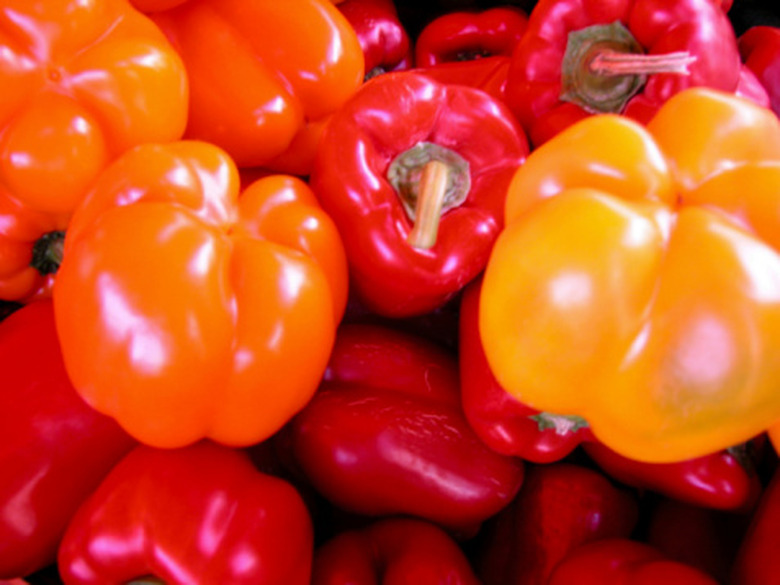Bell Peppers Are Rotting On The Vine
Bell peppers are sun loving plants that need a long growing season and well-drained soil. The fruits are mild flavored and can be green, yellow, orange, red or even purplish-brown. Bell peppers can be used in a wide variety of recipes or simply enjoyed fresh and crisp off the plant.
Bell peppers are sun loving plants that need a long growing season and well-drained soil. The fruits are mild flavored and can be green, yellow, orange, red or even purplish-brown. Bell peppers can be used in a wide variety of recipes or simply enjoyed fresh and crisp off the plant. Pepper plants fall prey to numerous pests and diseases. In fruit, problems are often caused by fungal diseases.
Temperature
Bell peppers can freeze in low temperatures, which causes soft spots, and may get too hot which will burn or "cook" your peppers. You know what happens to peppers when you saute them. They get a little limp, which also happens to fruit on the vine. Ideal temperatures for peppers are between 75 and 85 degrees Fahrenheit. Temperatures that are higher can cause fruit damage and stunting. Temperatures that are lower than 40 degrees will start to affect fruit quality within a day or two.
- Bell peppers are sun loving plants that need a long growing season and well-drained soil.
- Temperatures that are higher can cause fruit damage and stunting.
Blossom End Rot
If your pepper flowers have blossom end rot, it is transmitted to the fruit. The fruit develops soft spots at the blossom end which may mold and sink in. It is a disease that usually occurs at the beginning of the season. It is characterized by a tan lesion at the blossom end that spreads and is soft and rotten. The disease is often mistaken for sun scald which also leaves tan spots on fruit. It is caused by low levels of calcium in the plant. Calcium supports cell growth and tissues break down without it. Liming may be helpful in preventing the symptoms.
- If your pepper flowers have blossom end rot, it is transmitted to the fruit.
- It is characterized by a tan lesion at the blossom end that spreads and is soft and rotten.
Anthracnose
Anthracnose is a very common fungus which is also found on ornamental trees, bushes, ferns and just about any other type of plant. In fruits it will gradually cause the interior to break down and become watery. Eventually the walls will collapse. Anthracnose overwinters in soils and is found in seeds as well. Any infected fruit must be removed and destroyed immediately. Dropped plant material also needs to be raked up and destroyed. Copper- or sulfur-based fungicides can be applied every seven days to combat the disease.
- Anthracnose is a very common fungus which is also found on ornamental trees, bushes, ferns and just about any other type of plant.
- Copper- or sulfur-based fungicides can be applied every seven days to combat the disease.
Phytophthora and Pythium Rots
Other common causes of rotten fruit are phytophthora and pythium. These are fungi that spread in warm, wet weather. The most obvious signs are a white mold on the affected parts of the fruit. Crop rotation is essential as both fungi will live in old plant material and soils. The fungi also cause root rot, stem canker and leaf blight. Treatments are similar to those recommended for anthracnose, where hygienic practices are crucial and frequent spraying with a good fungicide can help prevent infection and spread of the diseases.
